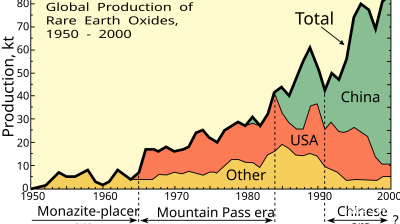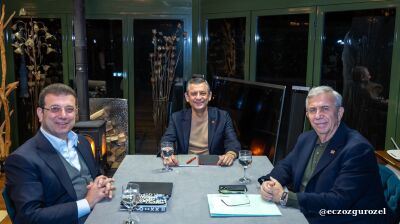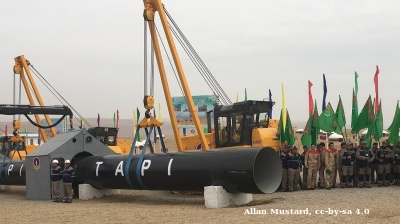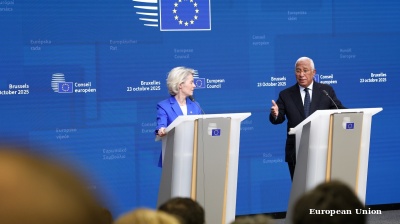A month ago I wrote that Ukrainian resistance in the Severodonetsk and Lysychansk salient might experience a sudden collapse under constant Russian shell-fire. Approximately ten days after that article the collapse came, and the front moved west by about 20 km. Neither side has released reliable figures for the number of troops killed, wounded or captured, but a sober estimate suggests that surprisingly few Ukrainians fell into Russian hands. At the last minute Ukraine carried out a ragged but successful withdrawal – with video reportage showing Ukrainian troops fleeing in private cars and even walking westwards.
But the collapse did not signal the restart of mobile warfare. Instead, Russia’s momentum appears to have stalled. While Russian forces continue to shell Ukrainian lines and rear areas, at a rate somewhere in the region of 20,000 shells per day across a 30-km front that runs due north from Horlivka, reports from the contact line conspicuously lack any substantial movement of that line. Russian tactics – shell the line until it cracks then occupy the ground without resistance or Russian casualties – are extremely slow.
In the two weeks since the taking of Lysychansk the contact line has moved no more than a few kilometres west. Fronts are also stalled in Kherson and Kharkiv.
Meanwhile, Ukrainian government sources have been talking up the size of the infantry forces which have been mobilised since February. Defence Minister Reznikov claimed that Kyiv has a “million-man army” at its disposal, a number that turned out to include police forces, the National Guard and the Border Guard. Stripping those away still leaves a still very considerable force of 700,000 men and women in uniform with some military training from national service and more recent militarisation. The number is probably exaggerated but not by much – men have been forbidden from leaving Ukraine since the start of the war, and it is not hard to give a man a uniform, a rifle and a unit.
Reznikov declared that this large, if weak, force would be thrown against the Kherson front, presumably in an attempt to move the contact line east to the Dnepr River. A few days later he walked back from this plan, saying “Let’s just say, there was a little misunderstanding. I did not say that we are gathering a million-strong army. Please forgive my English, it is not my native language”. So, no “human wave” offensive in Western Kherson, but we have seen harassing attacks along the northern and southern fringes of the 1,000-km front. Casualty rates are not being reported but are likely very high for the attackers.
A “human-wave” offensive looks very unlikely, in part because of the logistical challenge of assembling a hundred thousand men in one place in secret with all the supplies and ammo they need.
Much more likely is the steady deployment of replacement troops to the contact line in the Donbas salient, who would then dig in. Even partly trained troops can hold a trench line with limited supplies. With a reserve of several hundred thousand men Ukraine can take losses of 200 men per day in the Donbas more or less indefinitely.
That situation (if it is happening) would pose a serious challenge to Russia. With a clear agenda to preserve soldiers' lives, Moscow’s only practical strategy is the one it is using on the Donbas front: shell the enemy to pieces before occupying abandoned defence lines. The tactic keeps Russian soldiers alive, but is very, very slow.
Consider: the attack on Severodonetsk and Lysychansk began around May 6 but Lysychansk finally fell only on July 3. It took 60 days for the front line to move 30 km – 500 metres per day. Today’s rates of advance are even slower.
Kyiv can dig fortified lines all over the larger Donbas salient on to the Dnepr River. Ukraine’s Javelin missiles have neutralised Russia’s tanks and the hand-held MANIPADs can also counter airstrikes. That leaves Russia with the option: “artillery conquers, and infantry occupies”.
Geography makes Russia’s calculus worse. Ukrainian forces occupy a salient poking into Russian-held territory with Slovyansk at its northern end and Horlivka at its southern. The salient is 30 km wide and 20 km deep. With constant pressure, moving at 500 metres per day, Russia might take eight weeks to occupy it. But that would still leave half of Donetsk Oblast in Ukrainian hands, with another 40 km of ground to capture but this time on a north-south front of 80 km.
It is likely that Russia’s original plan was to take this ground with rapid armoured thrusts from the north and south to surround, neutralise and capture the Ukrainian forces inside the larger salient. Instead, Russian troops have become bogged down in a slow slogging fight over well-prepared trenches, relying on a ten-to-one advantage in artillery fire to win small advances.
HIMARS tips the artillery balance
In the past two weeks the calculus has grown worse still. Until now Russia has been able to move its flow of artillery ammunition (a few thousand tonnes per day) to within an hour’s drive of the gun line without fear of retaliation. That has changed. With a small force of US HIMARS rocket-firing trucks in operation the artillery balance has changed in three painful ways.
First, the standard rocket fired by HIMARS can fly 70 km. This means that a launch vehicle sited a protective 20 km behind the contact line can hit forward logistics facilities about 50 km beyond it – those railheads where Russian ammunition moves from trains to trucks for the last leg to the gun line. As soon as HIMARS arrived, Ukraine claimed (reliably) to have hit some 30 of those logistics points, destroying large quantities of stored Russian artillery ammunition. More importantly, the rail heads have to move further away from the gun line, slowing the flow of ammunition forwards as the same number of trucks does double the work.
Second, HIMARS rockets have an accurate inertial guidance system which allows them to hit fixed ground targets (like a warehouse or a railhead) with their 100 kg warhead. Inertial guidance is internal to the rocket, so it cannot be jammed or spoofed. This means that Russia must now spread its logistics depots among more sites and that those sites must be concealed from US satellite reconnaissance. That slows up the logistics flow.
Third, while a HIMARS rocket is not invulnerable to anti-missile defences, it is hard to hit, coming in low and very fast (500 metres per second), with a flight time from launch to impact of only about 120 seconds. If Russia wants to hit incoming HIMARS rockets it must spread its surface-to-air launchers more thinly, opening space in which the remnants of Ukraine’s air force might be able to operate once more.
Reports from the contact line corroborate that the rate of incoming Russian artillery fire has indeed slowed.
Sited well behind the contact line, HIMARS launchers are harder to kill because they can operate under cover from shoulder-launched air defence and from Ukraine’s remaining large air defence missile units. They can also move (fast) within seconds of firing rockets, skipping out of the way of retaliation.
Harder, but not impossible – Russia has already claimed three launcher kills out of the eight presently in service. That remaining threat might be neutralised if the US finally decides to supply extended-range HIMARS ammunition to Ukraine.
HIMARS has two extended range options. The first is a standard rocket with a smaller warhead that can fly 135 km. That would mean hitting a target 50 km behind the contact line from 85 km away – a range that makes a counter-strike very unlikely.
The second is a much larger rocket that carries a 200 kg warhead for 300 km. This weapon (TACAMS) offers a new range of possibilities to Kyiv – for example its combination of precision (a few metres) and payload would allow it to damage or even destroy the Kerch Straits bridge that connects Crimea with Russia. It could do the same to the bridges across the Dnepr that supply Russian troops in western Kherson and that would also supply an assault on Odesa. Since Moscow regards Crimea as sovereign Russian territory an attack on it raises the alarming possibility that Moscow might regard a TACAMS attack on Crimea as an American act of war against Russia. The possibilities for TACAMS-driven escalation are frightening.
Wither Russian strategy
What does all this mean for Russia’s strategy from here on? It is worth remembering that Russia is still in its declared “Phase 2” of the “Special Military Operation”. I speculated two months ago on what Phase 2 might contain. Whatever its aims (and those are very much not public) they were probably set with an assumption that Russia could move the contact line faster than 500 metres per day.
Phase 2 might have been reduced to occupation of the whole of Donetsk Oblast. If it includes an advance to the Dnepr River Russian forces would have another 70 km to take, on a front some 400 km long. It is hard not to conclude that if Phase 2’s objective was to occupy trans-Dnepr Ukraine the aim is now out of reach absent a full mobilisation of Russia’s armed forces. It is highly unlikely that a full mobilisation is politically possible – Putin’s support would drain away, while US Neocon activists inside and outside the Administration might finally get their way and drag the West into a war with Russia. Moscow has repeatedly confirmed that fresh conscripts will not be sent to fight in Ukraine, while reports from inside Russia suggest that recruitment of non-conscripts is proving difficult, slow and surprisingly expensive.
The same conclusion seems to apply to the taking of Odesa. There is no reason to believe that the rate of advance on Odesa would be any faster than it has been in the Donbas. Indeed, an attempt to advance on both fronts simultaneously would dilute Russia’s artillery advantage in both areas, perhaps fatally, and Ukrainian nationalist sentiments are likely to withstand more pain west of the Dnepr than east of it. If Odessa is out of reach then Kharkiv is equally so. Back east of the Dnepr a Russian win would have to include the capture of the main Dnepr cities – Zaporizhiye, Dnipro and Kremenchuk – each considerably larger than Mariupol and each closer to home and covered by HIMARS and Ukrainian artillery (such as it is).
It is hard to escape the conclusion that a quick win is simply no longer available to Russia, and that a slow one is out of reach too.
Where does that leave Phase 2? A clue might be found in Putin’s recent statement that the war is reaching a point at which Ukraine’s negotiating options have vanished. It is interesting to think about how negotiating options can vanish. One way is for a party to achieve unequivocal victory through the complete collapse of the other. Think of Germany in May 1945. That is not happening in Ukraine.
Another way is for one party to have reached all its goals in a way that effectively prevents the other party from upsetting them. It may be this result that Putin was referring to. Looking at the rate of advance in the Donbas, that interpretation would imply that Russia’s Phase 2 goal has shrunk to marginal additional gains in the Donbas, perhaps the capture of that small northern salient up to Slovyansk and Kramatorsk, leaving the western half of the Donetsk Oblast in Ukrainian hands.
One plan might be to take those two cities and then “freeze” the front throughout Ukraine, using artillery and air superiority to stop Ukraine from bombarding civilians in the Donbas and Kherson (which it has been doing consistently in recent weeks without comment from Western media), by systematically destroying artillery and rocket systems anywhere that they appear.
Standstill?
A unilateral standstill declaration by Moscow would leave Ukraine with two choices – either accept it, and with it a frozen conflict long term, or throw large numbers of partly trained men into near-suicidal attacks against well-prepared Russian lines covered by artillery and air support. The latter option would kill up to 100,000 Ukrainian men (initially; more if sustained) probably for no territorial gain. At present Kyiv is loudly proclaiming its intention to recover all territory occupied by Russia – a firm case of Unicorns and Rainbows – possibly in order to keep weapons and money flowing in from the West. Kyiv can of course continue to make wild statements of impossible ambitions while in practice accepting a fait accompli.
A unilateral standstill would stop the killing on both sides and would cause Western media audiences to grow bored of the Ukraine war and turn their attention to more pressing matters – inflation, living costs, national elections, the energy crisis and whatever else comes along to distract them. US audiences are already there – Ukraine is no longer high in the running order of national news programmes, or even on them at all much of the time. UK audiences too are beginning to focus on other issues, not least the replacement of a deeply Russophobic Prime Minister who has been a major cheerleader for Western support of Ukraine. A standstill would also reduce, even remove, the incidents that are presented as Russian “outrages” (like the destruction of a Ukrainian army mess in Vinnitsa last week).
A frozen conflict might in practice appeal to both sides. Ukraine could continue to plead for money and weapons from the West (being still under occupation), while Russia could declare the Operation “complete” and look to liberate its frozen foreign reserves and restart the sale of oil and gas to Europe. It must be tempting.
The alternative looks very much less tempting. Denied the ability to carry out manoeuvre warfare by Javelin and its cousins Moscow has the option of a slow, painful, expensive westwards slog, with every day bringing new accusations of outrage and war crimes, new risks of escalation from Nato or of political trouble at home, and new military funerals.
But there is a very real possibility that none of what I describe above will happen. Ukrainian forces are now more or less tank-less and plane-less, but Russian forces are very much tanked up and ready to roll. To a soldier there is always the prospect that if you push hard enough and long enough on one point your opponent’s resistance at that point will collapse, allowing your manoeuvre forces to flood through the gap you’ve created and restart the fast mechanised war that you should have enjoyed all along. With advances of 20-30 km per day on offer the Dnepr and Odessa look only one tempting week away, with tens or hundreds of thousands of enemy infantry surrendering into captivity behind your armoured spearheads as they envelop whole army corps. Cities throw open their gates – unwilling and unable to suffer the same fate as Mariupol – and Kyiv sues for an immediate peace on terms similar to the March deal in Ankara.
This is not a complete fantasy. If Russian claims for Ukrainian mortality rates (both in and behind the contact line) are correct then the new Ukrainian front in the Donbas salient might well collapse. If the 700,000 man Ukrainian national service army is as weak, partly trained and short of ammunition as it looks then it might well throw up its hands in surrender. Larger defeats have happened (and Russia’s Ministry of Defence narrates them in its Telegram feed at regular intervals).
At present there are no signs that Moscow is limiting its aims to the Donbas and Kherson, and some signs that it has larger goals in mind. With one exception at Ankara in March, whenever Moscow has been offered a choice of more violence or less violence since February it has chosen “more violence”. We have ten weeks of good fighting weather in which to find out which choice it will make now.
Features

Asian economies weigh their options amid fears of over-reliance on Chinese rare-earths
Just how control over these critical minerals plays out will be a long fought battle lasting decades, and one that will increasingly define Asia’s industrial future.

BEYOND THE BOSPORUS: Espionage claims thrown at Imamoglu mean relief at dismissal of CHP court case is short-lived
Wife of Erdogan opponent mocks regime, saying it is also alleged that her husband “set Rome on fire”. Demands investigation.

Turkmenistan’s TAPI gas pipeline takes off
Turkmenistan's 1,800km TAPI gas pipeline breaks ground after 30 years with first 14km completed into Afghanistan, aiming to deliver 33bcm annually to Pakistan and India by 2027 despite geopolitical hurdles.

Looking back: Prabowo’s first year of populism, growth, and the pursuit of sovereignty
His administration, which began with a promise of pragmatic reform and continuity, has in recent months leaned heavily on populist and interventionist economic policies.



